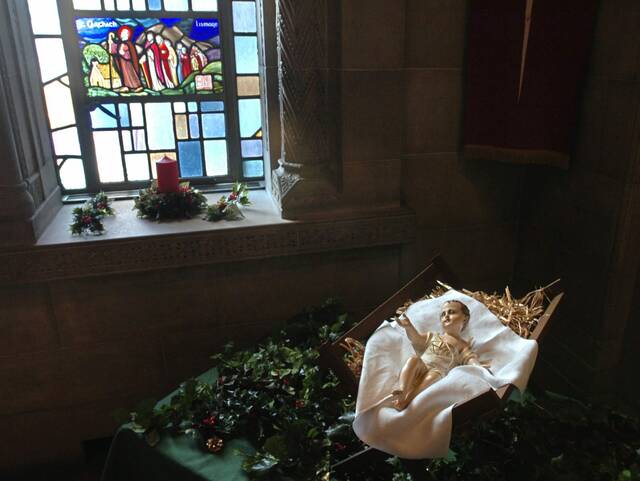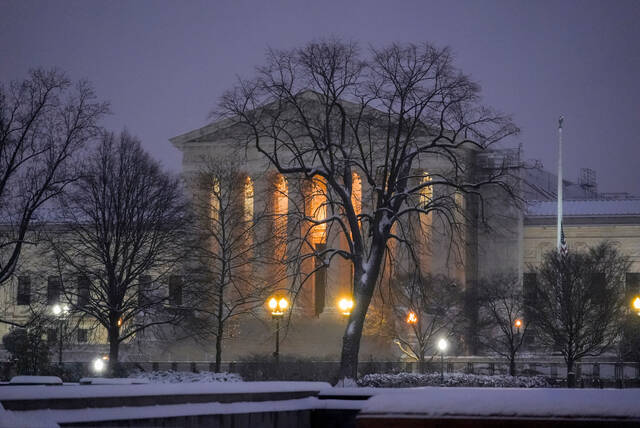The year, 1944. The date, Dec. 24, Christmas Eve. The time, midnight. And for this day, we hoped the sounds of World War II would be drowned out by the hymns of Christmas sung by millions of Christians in tens of thousands of churches celebrating the birth of a small child who would be called Jesus Christ.
In all these churches in remembrance of this most holy night would be a replica of a stable, of three wise men with their gifts of myrrh, frankincense and gold. There may have been an animal or two, but most important would be Joseph and his wife, Mary, and laying in a manger would be the Christ child in all his glory. All churches in the whole world, that is, except one.
That one church may have had a manger but would be missing the Christ child.
That church was in the small western Pennsylvania mining town of Whitney, and that beautiful church was St. Cecilia Catholic Church.
The year, 1944. The date, Dec. 24, Christmas Eve. The time, 5 p.m. The final preparations for midnight Mass were almost complete. The priest, nuns, altar boys and other volunteers had St. Cecilia decorated in anticipation of the Christmas Mass, and the final act was to place the baby Jesus in the manger.
Two altar boys were to have the honor of carrying the manger and baby Jesus to the display, and then St. Cecilia would be ready to welcome one and all to the celebration of the birth of Jesus Christ.
The baby Jesus statue carried by one of the altar boys accidentally fell, and its outstretched arms that were to display his love for all of humanity had broken off and lay in pieces on the floor of the altar.
After a discussion between the priest and nuns, one altar boy was told to gather the pieces and put them in a box.
I was 6 years old when this happened. I watched my brother come into our dining room where my father was sitting and tell him what had happened. The priest had sent my brother home with a request that my father attempt the repair of the statue.
I watched as my father carefully laid the pieces on the table. The baby Jesus was in almost perfect condition except both of his arms were missing. My father tried as best he could to reconstruct the arms. He soon realized this would not be possible. There seemed to be no answer to his prayers, and midnight Mass would not have its most important part, the baby Jesus laying in the manger.
But as my father looked around the house, he noticed two small arms holding themselves out to him. He realized he had found the answer.
But with the answer was a very big problem: Those two arms were attached to my 8-year-old sister’s baby doll.
Even though many decades have passed, my sister still remembers that giving up her only doll was one of the most difficult decisions an 8-year-old child could make. My father did take those arms and, using some small tools, glue and plaster, attached them, and the baby Jesus was ready to take its place in the manger and welcome the parishioners at all the Christmas Masses.
My brother returned to the church and placed the baby Jesus in the manger, and at midnight Mass, when the congregation and choir sang “Away in a manger, no crib for a bed, the little Lord Jesus laid down his sweet head,” the meaning of Christmas was truly laying there with outstretched arms, on display to show his love for one and all.
My father, Theodore, was a quiet, gentle man, a generous man, a religious man, so much so that he named one of his children after the priest, Daniel Aloysius Lawless, who married him and his bride.
His son Robert was the altar boy; the young girl who gave up her doll was my sister, Dorothy Reeping Thompson. And I was that little boy watched a Christmas miracle happen right in front of me on the dining room table.








